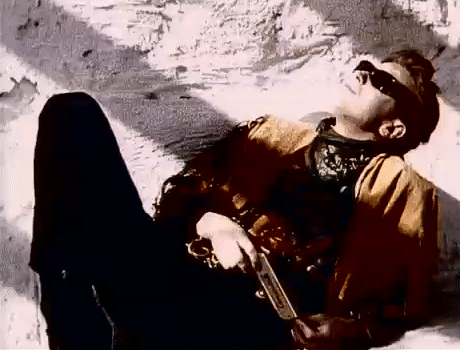#unige
Explore tagged Tumblr posts
Video
tumblr
I. Statutes, aims and methods Oct 1997 Archived Web Page
0 notes
Text










Reportage Photo avec les activités culturelles de l'unige et Denis Ponté, 2017 Genève. https://ninovuarrier.ch/le-reflet-de-nos-savoirs
0 notes
Text




Fender - Dimension IV - sound expander
cred: reverb.com/The Jam Room
31 notes
·
View notes
Text
So apparently the new uni pants are not only transparent and ill-fitting, but according to The Athletic there also aren’t enough of them.
2 notes
·
View notes
Text
me, listening to the saddest, most depressing welsh language cowboy song you could ever listen to (it's a sea metaphor about suffering with depression and suicidal ideation and grief and how all things must come to an end):

#newtrabble#🎶cyn llifo'i lawr y creigiau ar hyd llwybrau unig iawn ond bob un ddaw'n ôl i'r tonnau rhaid i'r gylchred fod yn llawn🎶
5 notes
·
View notes
Text
Aktivisme Digital dan Demokrasi
Oleh Alifa Zahra Eka Putri Mahasiswi Program Studi Ilmu Pemerintahan Universitas Galuh Aktivisme digital sering disebut juga Slacktivism, telah menjadi fenomena sosial-politik di era teknologi saat ini. Menurut Hap Halupka, slacktivism adalah aksi online yang mudah ditiru dan dibagikan. Tidak memerlukan komitmen dan spesialisasi dan melibatkan sistem politik yang sudah ada. Meskipun terdengar…
0 notes
Text
I failed my finals and now I just want to burry myself alive… I’m so sick of this university and being an undergrad… I just want it to be over. I want to move on and explore new horizons but this cursed city and its university are dragging me down 😤
0 notes
Text
“Oh! Darling” is a masterful piece of singing from Paul, his most spine-tingling vocal assault since “Long Tall Sally” and “I’m Down.” Beneath a motorized banging piano (left) and blistering chopped guitar chords (right), he gives himself a swaggering bass line that swerves and pivots, mitigating the angered surface with a constantly swaying bottom. The heated rhythms of “Got to Get You into My Life” are slowed to a simmering gospel blues torched with Ray Charles vocal melodramatics, sacred inflections redeeming secular heartache.
In addition to the angular bass line that undergirds the verse, Paul writes himself a walloping solo vocal break at the top of each verse. Like Elvis Presley in “One Night” (1957), McCartney crams more into every new title outcry, making each one more charged than the last—it’s the kind of break that allows a great singer to unleash the very essence of what the song is all about. By seizing the moment completely, Paul defines it, shapes it in his own terms; his vocal authority commands all the other players. He makes these moments unig-norable the same way he makes the feverish ad-libs in “Hey Jude” so compelling—by letting his guts tell him where to land, and trusting his spontaneous sense of what sounds right to guide him toward the most riveting spontaneous phrasing. Nothing sounds planned because it isn’t, and the gripping sense of emotion in the rising and descending swells at the end of each verse helps ground his flights as they set up his next entrance.
The bridge transcends the lift of the verses: as he sings “When you told me/You didn’t need me anymore,” Paul’s voice comes unhinged, and the clipped guitar of the verses balloons into huge arpeggiations of the harmonies (right). It’s one long scream of pain, and Paul sustains the tension right up to the last solo plea, “I nearly broke down and di-i-i-ed, oh, darling!” as he links the final desperate cries of the bridge up with the return of the verse. The escalation of harmony in the bridge is almost secondary to the way he contorts the word “need” (from A major, the band jumps from D7 to F7 on that word to intensify the basic blues progression) . In these moments he nearly leaves everyone else behind, and his focus dares the others to match his emotional pitch.
The third verse is all warmed up: Paul takes more chances stretching words (“I’ll never maaaake it . . . alone”), and lets silences spew their own inner tensions. The second time they move toward the bridge, Paul ad-libs “Believe me, darling”; we know what’s going to happen, and they know that we know, so they’re forced to make even more out of it the second time.
As the second bridge comes around the bend, the sense of excitement is inescapable: the persuasive piano rumble that gets going in the left barely hints at the explosion of energy that takes place once they land on it. The end of the band’s fuse suddenly ignites Paul’s voice: “When you told me—whoo—woo!!”
That single ad-lib takes the whole track into hyper-space—you can hear it in the way the piano’s octaves get manic throughout the succeeding bridge, and the way it reluctantly cools to the unsettled determination of the final verse (“I’ll never le-e-et . . . you down”). (With energy like this in the air, there’s no need to dress things up with roving synthesizers and sly backup vocal jokes.)
The last line Paul sings has all the sorrow of rejection and the resolve of not caving in that the entire song has sustained: he grieves over his loss, convinced that he doesn’t deserve it. A guitar frames the track with bristled notes as the band holds the final chord.
(Tell Me Why by Tim Riley, 1998/2002)
65 notes
·
View notes
Text
Chromosphaera perkinsii is a single-celled species discovered in 2017 in marine sediments around Hawaii. The first signs of its presence on Earth have been dated at over a billion years, well before the appearance of the first animals. A team from the University of Geneva (UNIGE) has observed that this species forms multicellular structures that bear striking similarities to animal embryos. These observations suggest that the genetic programs responsible for embryonic development were already present before the emergence of animal life, or that C. perkinsii evolved independently to develop similar processes. In other words, nature would therefore have possessed the genetic tools to "create eggs" long before it "invented chickens." The study is published in the journal Nature.
Continue Reading.
79 notes
·
View notes
Text
Fi'n cael cinio yn y tafarn ar hyn o bryd, ac mae'r pêl droed yn chwarae ar y teledu. Fi 'di penderfynu bod yr unig pobl ar y maes pêl droed fi'n parchu yw'r gôl-geidiaid. Dyma achos nhw yw'r unau sy'n trio stopio'r pêl droed.
#hefyd nhw yw'r unau sy'n bod yn anaf go iawn#ac mae'n nhw'n gwisgo lliwiau eu hunain#s'dim ots ganddyn am y dress code#The Only Bitches I Respect#spyld
36 notes
·
View notes
Text

An article published in the journal "Nature" reports the discovery of three ultramassive galaxies in the early universe in which stars are forming with an efficiency almost twice that of galaxies of average mass by the standards of that era. A team of researchers coordinated by the University of Geneva (UNIGE) used observations conducted with the James Webb space telescope within the FRESCO program. The three galaxies (Image NASA/CSA/ESA, M. Xiao & P. A. Oesch (University of Geneva), G. Brammer (Niels Bohr Institute), Dawn JWST Archive), which were cataloged as S1, S2, and S3, are almost as massive as the Milky Way and add to others that were discovered in recent years and are difficult to explain with the most accepted cosmological models, starting with lambda-CDM.
19 notes
·
View notes
Text

Discovery of two planets sheds new light on the formation of planetary systems
The discovery of two new planets beyond our solar system by a team of astronomers from The University of Warwick and the University of Geneva (UNIGE), is challenging scientific understanding of how planetary systems form.
The existence of these two exoplanets - an inner super-Earth and an outer icy giant planet - within the WASP-132 system is overturning accepted paradigms of how ‘hot Jupiter’ planetary systems form and evolve.
Hot Jupiters are planets with masses similar to those of Jupiter, but which orbit closer to their star than Mercury orbits the Sun. There is not enough gas and dust for these giant planets to form where they are observed, so the accepted theory is that they originate far from their star and migrate inward as the planetary system evolves.
Until now, hot Jupiters were thought to orbit their star alone, as migration towards the star would eject other planets in the system. The research team’s recent observations of two extra planets in the WASP-132 system now calls into question this theory.
David Armstrong, Associate Professor of Physics, The University of Warwick said, “The detection of the inner super-Earth was exciting as it’s particularly rare to find planets interior to hot Jupiters. We carried out an intensive campaign with state-of-the-art instruments to characterise its mass, density and composition, revealing a planet with a density similar to that of the Earth”.
This planetary discovery adds a layer of complexity to the WASP-132 system as migration of a hot Jupiter towards its star through dynamical perturbation would destabilise the orbits of the other two planets. This suggests a more stable ‘cool’ migration path for the hot Jupiter in a proto-planetary disc that surrounds a young star and is the site of planet formation.
“The WASP-132 system is a remarkable laboratory for studying the formation and evolution of multi-planetary systems. The discovery of a hot Jupiter alongside an inner super-Earth and a distant giant calls into question our understanding of the formation and evolution of these systems. This is the first time we have observed such a configuration”, says François Bouchy, Associate Professor, Department of Astronomy, UNIGE Faculty of Science.
The hot Jupiter orbits its star in seven days and three hours; the super-Earth (a rocky planet six times the mass of the Earth) orbits the star in just 24 hours and 17 minutes; and the icy giant (five times the mass of Jupiter) orbits the host star in five years. The precise measurements of radius and mass have also made it possible to determine the density and internal composition of the planets. The super-Earth composition is dominated by metals and silicates, similar to that of Earth.
Observations of WASP-132 continue, with the ESA's Gaia satellite measuring minute variations in the positions of stars since 2014, with a view to revealing their planetary companions and outer brown dwarfs.
IMAGE: An artist’s impression of the two new planets discovered. An inner super-Earth, here seen transiting in front of the orange host-star and an icy giant planet on the periphery of the system. Credit Thibaut Roger - Université de Genève
10 notes
·
View notes
Text
"An international team of astronomers, led by a researcher from the University of Geneva (UNIGE), has shown that the sun’s magnetic activity has a significant influence on its seismic characterization, contrary to predictions in previous studies. Important data such as its size, age and chemical composition depend on it.
These results pave the way for in-depth research to better understand the nature of the magnetic activity and its impact on stellar oscillations. The study is published in the journal Astronomy & Astrophysics."
"A bright future for the study of the magnetic activity of stars
The results of this study show that the magnetic activity of stars poses a major challenge for future space missions such as PLATO, particularly in terms of characterizing the most active stars. “However, this discovery also opens many exciting research prospects,” concludes Bétrisey.
The magnetic activity of stars has a significant influence on stellar oscillations, which complicates the precise determination of fundamental properties such as the mass, radius and age of stars. For future space missions, this means that it will be necessary to develop more sophisticated methods to take account of this magnetic impact."
continue reading
#sun#magnetism#electromagnetism#energy#plasma#plasma physics#stars#stellar physics#oscillation#density#mass#matter#seismology#seismic activity#astronomy#science#technology#discovery#space#universe#cosmos
19 notes
·
View notes
Text
#data science#data scientist#data scientists#machine learning#artificial intelligence#deep learning#programming#data analytics
4 notes
·
View notes
Text
Rhaid i mi beidio ag ofni, Ofn yw'r lladdwr meddwl, Ofn yw'r farwolaeth fach dod â thranc llawn, Byddaf yn wynebu fy ofn, Byddaf yn caniatáu iddo basio drosof fi a thrwof fi, A phan fydd wedi pasio, Byddaf yn troi fy llygad mewnol i weld ei gwrs, Lle mae'r ofn wedi mynd, Ni fydd ddim, Byddaf yn gorwedd yn unig.
8 notes
·
View notes
Text

THE LIVING DAYLIGHTS 1987
80s Unigate milk float
15 notes
·
View notes